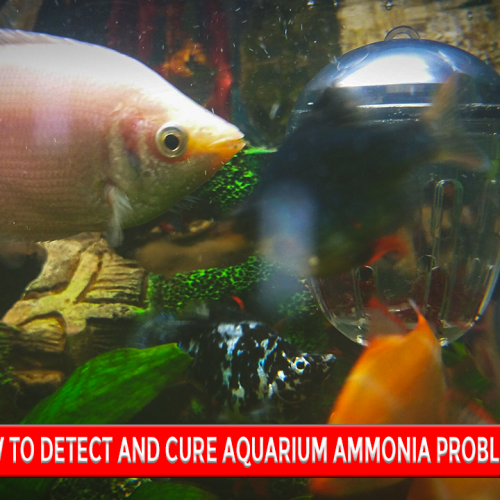Aquaponics Basics: Sustainable Plant & Fish Farming!
Aquaponics is a revolutionary and sustainable system which combines aquaculture, which is the raising of fish, and hydroponics which is growing plants without soil. This closed-loop ecosystem permits plants and fish to live together, providing an environmental-friendly means of food production. Whether you are a keen gardener or an ardent supporter of sustainable living, aquaponics is an intriguing and rewarding venture.
What Is Aquaponics?
 Aquaponics is a symbiotic system where fish and plants benefit from each other. Fish produce waste rich in ammonia, which, when broken down by beneficial bacteria, converts into nitrates. These nitrates serve as natural fertilizer for the plants. In turn, the plants filter and purify the water, creating a healthy environment for the fish.
Aquaponics is a symbiotic system where fish and plants benefit from each other. Fish produce waste rich in ammonia, which, when broken down by beneficial bacteria, converts into nitrates. These nitrates serve as natural fertilizer for the plants. In turn, the plants filter and purify the water, creating a healthy environment for the fish.
This cycle mimics nature, requiring minimal external inputs and producing both fresh fish and organic vegetables.
Key Components of an Aquaponics System
The home for your aquatic life, ranging from small tanks for beginners to larger ones for commercial setups.
Grow Bed
This is where plants grow, typically in a soilless medium like gravel or clay pellets.
Pump System
Circulates water between the fish tank and grow bed, ensuring nutrients and oxygen are evenly distributed.
Beneficial Bacteria
These microorganisms break down the fish waste into plant nutrients, which plays a crucial role in the functionality of the system.
Plants and Fish
These are the stars of the system. Choose species that are compatible with the environment you create.
Benefits of Aquaponics
Sustainability
Aquaponics uses 90% less water than traditional farming and eliminates the need for chemical fertilizers.
Space Efficiency
It is perfect for urban areas as it can thrive in small spaces, including balconies and rooftops.
Organic Produce
Plants grow faster and pesticide-free; fish is a natural protein source.
Eco-Friendly
Waste is recycled within the system thereby reducing environmental pollution.
Setting up Your First Aquaponics System
 Choosing the Fish
Choosing the Fish
- Tilapia: Great hardy, fast, and grow quickly.
- Goldfish: A great selection for beginners
- Catfish: Best used in the larger setups.
Select suitable plants
- Leafy Greens. Lettuce, Spinach, kale
- Basil, Mint, Cilantro
- Fruiting Plants. Tomatoes, Peppers, and Strawberries, for experts.
Ensure Correct Water Parameters
A pH level of 6.8-7.2 for water with excellent aeration is good for the health of fish and plants.
Start Small
Start with a basic system to learn the basics before going big.
Maintenance Tips for Aquaponics Success
Monitor Water Quality
Ammonia, nitrate, and pH levels need to be checked regularly.
Feed Your Fish Properly
Overfeeding is one of the major causes of water quality issues. Feed your fish only as much as they would consume in a few minutes.
Prune Plants Regularly
Keep your plants healthy by trimming dead leaves and ensuring they have adequate space to grow.
Keep an Eye on Fish Health
Watch for signs of stress or disease, and address issues promptly.
Common Challenges in Aquaponics
Balancing Fish and Plant Needs
Different species have unique requirements, so choose compatible fish and plants for your system.
Water Temperature Fluctuations
Extreme temperatures can stress fish and hinder plant growth. Use heaters or chillers if needed.
Pest Control
Although aquaponics limits pests, there may be times when this happens. You can always use organic control methods like neem oil to help.
Conclusion:
Aquaponics is a revolutionary way to grow food sustainably, offering a harmonious blend of aquaculture and hydroponics. With proper planning and care, you can create a thriving ecosystem that provides fresh fish and organic produce. Whether you’re an eco-conscious hobbyist or an aspiring urban farmer, aquaponics is an excellent choice for sustainable living.
FAQs (frequently-asked questions)
Not at all. Only the strongest species are recommended, which include tilapia, goldfish, and catfish. These are ideal for starters.
Smaller systems can be put on a balcony, whereas bigger setups require a dedicated room or outdoor space.
With proper maintenance, there should not be an unpleasant odor coming from the aquaponics system.
It may be expensive to set up depending on the size and complexity, but long-term savings on water and fertilizer will make up for the investment.
Yes, with timers, sensors, and smart controls, you can automate much of the process.




